Two players entered Court no.2 at Wimbledon when the clock showed 11 AM on Wednesday. One of them was a seasoned champion, the three-time Major-winner Stan Wawrinka of Switzerland, the other was Reilly Opelka, a 21-year-old up-and-coming American who won the junior Wimbledon title in 2015, earned his first ATP title in February, and came into this year’s edition at SW19 ranked no. 63 in the world.
When the match ended 3 hours and 13 minutes later, and the American emerged victorious by the score of 7-5 3-6 4-6 6-4 8-6, you could easily make the argument that the Michigan-born youngster was the more seasoned, calculated, clutch player out of the two in what turned out to be a terrific encounter with several momentum shifts. Reilly seemed to be on the brink of losing more than once in fourth and fifth sets, had to swallow a controversial call that went against him on a crucial point in the final set, and still managed to stand tall at the end (and I mean that figuratively, although Opelka is 6’11”, joining Ivo Karlovic as the two tallest players on the ATP Tour). You expect to see that type of resilience from the veterans on the tour, when they seem to be down and out during a match but find a way to dig themselves out of holes and fabricate an avenue to the victory at the end of the day. Reilly is not a veteran by any means, but behaved like one on this day, at least in the mental department.
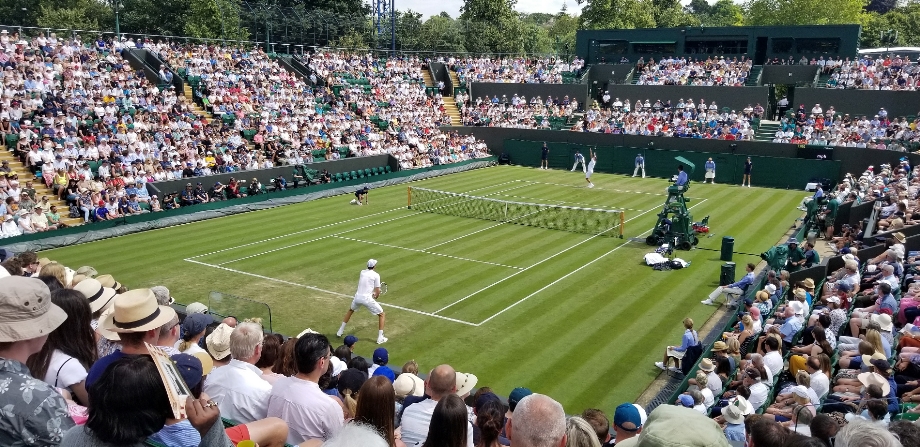
For a match that featured two big hitters (and servers), most important moments of the match were ironically decided on points that produced long rallies. Now, stop and consider the following question for a moment. Which one of these two players would you expect long rallies to favor? Unless you “inhaled,” I am guessing that your answer is Wawrinka. Logic dictates that Stan should outlast Opelka for the most part in such points.
Not necessarily. The final count on points that had 5 shots or more: 29-28 in favor of Opelka!
Not only that, Opelka was the one who out-rallied Stan on a few key points that had such rallies, and those points led to grave consequences for the Swiss – more on that below.
Take for instance, the deciding (and only) break of the first set on Wawrinka’s serve at 5-5, when Opelka had two break points at 15-40. Stan saved the first with a strong serve, but on the second, the players engaged in a baseline rally that lasted 21 shots. It was the longest one of the set by far, the only one that even went into a double-digit count. Wawrinka was the one who cracked instead of Opelka, when he sailed a forehand out in response to a well-struck shot by the American. It was representative of the set in which Opelka amazingly won six out of eight points that featured rallies of 5 shots or more. He held the next game to pocket the first set.
This awkward pattern certainly could not continue, right? Correct, it did not. After all, Stan is a polished player with a high IQ and if he needed a solution, he was going to find it. He did, by modifying his return position.
He began, and this may sound strange at first, to position himself further back on his opponent’s second serves. Significantly further back! He would wait a meter or so behind the baseline on the booming first serves of Opelka, and then, if Reilly missed the first serve, Stan would actually take several steps back for the second serve and return from almost where the linesmen stood in the back of the court (see photos below).
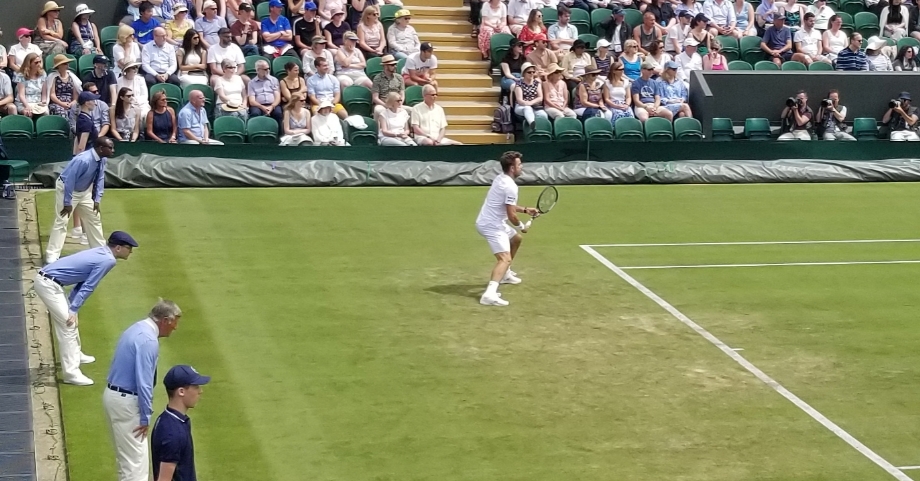
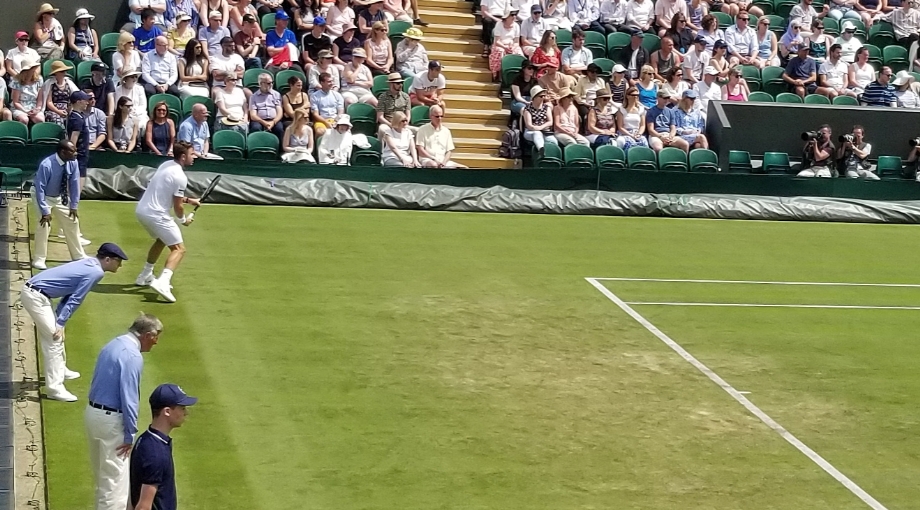
It worked, as Wawrinka began getting more returns in the court, mostly blocking Opelka’s first serves in order to get it down to the serve-and-volleyer’s feet on the first shot and pass him on the next. On Opelka’s second serve, because he was much further back, he would have enough time wind his big backswing and hit explosive returns for direct passes.
His adjustment bore fruit rapidly, as he broke Opelka’s serve at 2-1 and never looked back, equalizing the match at one set each. The same pattern continued in the third set and if you want to see an illustration of exactly why it was working so well for Stan, look no further than the 1-1 game where he broke Opelka’s serve in the third set. At deuce, Stan landed a return to Opelka’s feet, one that the American could not put back in the court. On the ensuing break point, Stan stepped back on Opelka’s second serve and hit a bazooka down-the-line return with his backhand for a clean winner past Opelka who was running to the net behind his serve. Stan was pumped, letting out a loud “KOM OOOOOON” (if you heard him yell that, you would understand why I spelled it so). His plan was working, he clearly had the upper hand in the match when he rode that break all the way to winning the third set and grabbing the two sets to one lead.
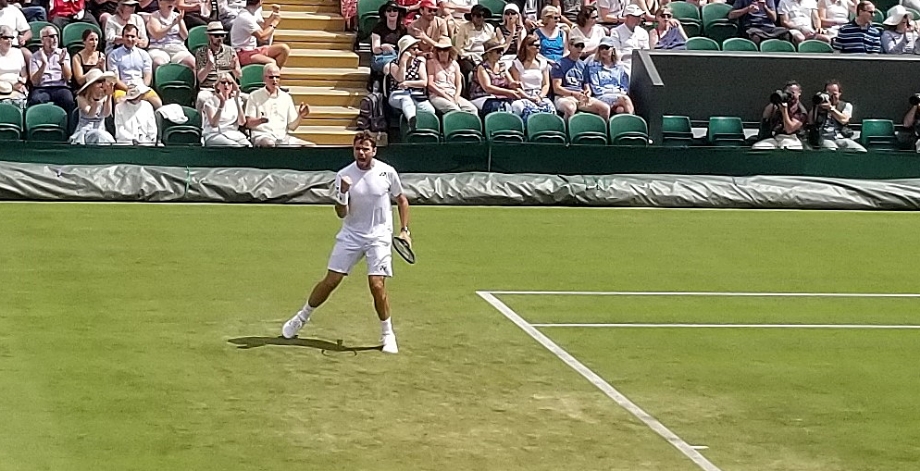
Down two sets to one and feeling the match slipping away from him, it was Opelka’s turn to find solutions. He said in his post-match press conference that Stan “was starting to return really well. He was putting a lot of balls at my feet. At first, I had a lot of success serving and volleying so I kept with that. And then as he kind of picked up on what I was doing and started reading my serve a little bit, it was more difficult for me to win points at the net. So, I had to play, played a lot of tennis on the baseline today.”
Opelka, in other words, had to resort to a tactic that would not normally classify as his A plan. This also showcases the problem-solving prowess of the American, as well as his willingness to perhaps execute a less-desirable plan if that is what it takes to turn the match around, qualities that you would usually find in seasoned competitors.
Well, this shift did not exactly make a big impact apart from taking away Stan’s targets on returns, and it is unclear how important a role it played in swinging the pendulum in Opelka’s favor, because he still struggled to hold serve, having to save three break points in his first two serving games of the fourth set. On the first one, at 15-40 in the first game, he once again won a rally from the baseline that ended with an unforced error in the net on a backhand down-the-line by Stan who would later characterize this missed opportunity as his main chance to put the match away in his post-match press conference. Opelka saved the next two break points with big first serves.
Stan, for his part, was having zero trouble holding serves, losing only three points in his first four serving games. But he did not get the break desired despite getting close as noted above. When Stan served at 4-5, 30-30, Opelka made a gutsy decision to nail the backhand return to the ad corner on Stan’s side. It landed in, the Swiss scrambled for it, but could not get it back in the court. Suddenly, Opelka had a set point. Guess what took place on that set point: a 15-shot rally. And guess in whose favor it ended: Opelka’s!
Out of nowhere, Opelka won a set that telegraphed a bad ending for him until the very last second. It was as close to the definition of “stealing a set” as it gets.
Probably still trying to recover from the unexpected turn of events, Wawrinka found himself down 1-0 in the fifth and 30-40 on his serve. It was Opelka’s chance build further steam and take the decisive lead. He got a short ball from Stan and hit a solid backhand down-the-line approach that clipped the back of the line but was called “out” by the lineswoman. Opelka challenged and Hawk-Eye showed that it was in. The point had to be replayed, which was an incredibly lucky break for Wawrinka because he was in deep trouble trying to get that ball back with Opelka approaching the net. Instead, Stan got to replay the point and won it with a 1-2 punch behind a big first serve. He held serve two points later and Opelka was left to deal with the bad break he got on that call (he was mad about it too).
But Opelka regrouped as soon as the game finished and got back to the business of holding steady on his serve, In fact, he produced his best serving performance of the match in the fifth set, recording an 86% rate on first serves (38 out of 44). So did Stan by the way, at 70% (26 out of 37). Opelka had a couple of close calls on his service games but repeatedly served his way out of trouble. Otherwise, both men kept holding and at one point it felt like we may witness the first implementation of the new “tiebreak at 12-12” rule at Wimbledon.
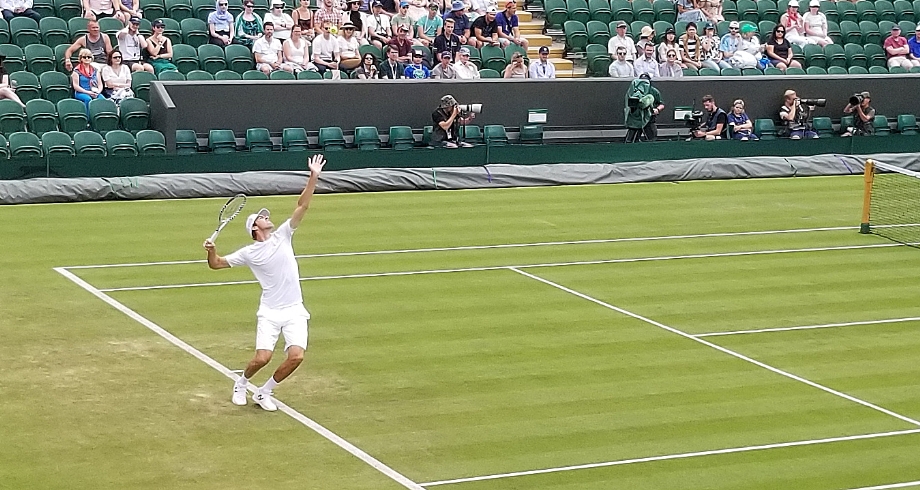
It was not to happen because the match came to an abrupt (and frankly shocking) end when Wawrinka, serving at 6-7, made four errors in five points, three of them on routine shots.
Just like that, Opelka earned the biggest win of his career, a thoroughly deserved one for that matter.
He managed to weather the storm after the second and third sets, did not let the match slip away in the fourth, and put behind a controversial moment early in the fifth that deeply disappointed him as he alluded to it in his post-match press conference: “I played a really good point, hit a backhand down the line, on the line. He barely made it back. They called it out. I challenged it. It was in. Replayed the point. I lost. So that was tough, as well. You know, I felt like could have been a break, but…”
The youngster essentially raised to the occasion in the same manner that a seasoned champion would. Nicely done!
His next opponent is Milos Raonic on Friday, one that presents a significantly different, yet no easier, challenge than Wawrinka did on Wednesday. Not to mention, an opportunity for another career victory.
